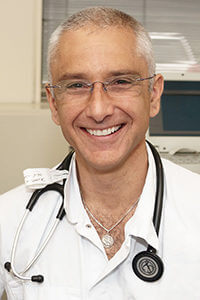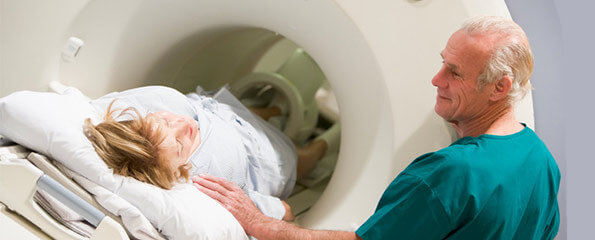Is a routine CT scan the key to prevent heart attacks?
Heart disease affects around 1.4 million Australians and is the single leading cause of death in this country. It kills 54 Australians each day, or one Australian every 27 minutes.
As a cardiologist, I have not yet met a patient who expected to have a problem; patients do not put into their diaries “possible problem with my heart next week”. Yet, what if we could be forewarned about, or prepared for, a potential problem with our coronary arteries? What if we could plan not to have a heart attack?
‘Heart attack’ is a term referring to a narrowing or blockage of the coronary arteries that can kill, or requires some form of medical intervention such as medication, time in a hospital, balloons or stents, or coronary artery bypass grafting (surgery).
Historically, the detection and the treatment of coronary artery disease have been related to either the presence of symptoms (including angina, or chest pain on exertion and shortness of breath on exertion) or the occurrence of an event, such as a heart attack. Once a patient has been diagnosed as having coronary heart disease, the way forward is very clear: re-establish or improve the blood flow and put in place secondary prevention strategies to reduce the risk of a recurrence, including use of medication, reducing cholesterol levels and lifestyle modifications.
The situation is not as clear-cut, however, when it involves patients who have not had a problem. Yet, they might be at high risk because of indicators such as cholesterol levels or high blood pressure or diabetes or even smoking. The treatment for that risk, prior to an event, is primary prevention. The difficulty with primary prevention is that it deals with risk. I believe our current risk assessment practice could be re-evaluated. It is my contention that by using the latest advances in technology to scan the heart, we can be ahead of the game in risk management.
PETER, a 35-year-old with high cholesterol, had tried cholesterol-lowering tablets but had suffered aches and pains. He did not want to be taking drugs unless it was clearly indicated. He was fit and well and was not regular medication. There was no history of premature coronary artery disease in his family although both his parents had had elevated cholesterol. However, the Australian Absolute Cardiovascular Disease Risk Calculator estimated Peter’s risk as very high. Married with three children, he didn’t want to leave his heart health to chance so he underwent scanning. This showed there was a significant amount plaque in his arteries; confirmation of a problem and its extent. The images were explicit. Gone were his doubts about the benefits of taking medication. The result was a major turn-around in the management of his cardiovascular risk. Today, he is positive about being informed and proactive.
HEATHER, 67, had no known family history of high cholesterol and a very low score on any cardiovascular disease risk assessment chart. Her cholesterol readings were always very low. However, following a CT chest scan after a persistent cough, one of the findings mentioned some coronary artery calcification. Her GP referred her to me. A CT coronary angiography demonstrated significant plaque in just one spot which, if left unattended, posed a high to very high health risk. Treatment was started immediately. Had this CT scan not been taken she would have felt protected by her good cholesterol readings and healthy life style while unwittingly actually being at significant risk of a heart attack at any time.
Let’s avoid the first event
In both of these cases, conventional risk assessments would not have served Peter or Heather well. Common practice risk assessment is based on observational data of a population of people, not the current health of an individual’s arteries. Factors such as increasing age, being male, cholesterol levels, increased blood pressure, diabetic status and smoking are associations of a possible a coronary event; they are not necessarily what has caused the problem. This means that there can be people who are high-risk based on such associations, yet they will not have an event. Conversely, there are those who would appear to score low but still have a problem.
Today’s CT imaging of the heart offers us an ability to evaluate the health of an individual’s arteries before the onset of a problem. This is a paradigm shift in the conventional management of coronary artery disease. Although cardiac CT imaging is generally available, it has not yet been broadly taken up. Time and further evaluation will see this technology used more extensively. In the meantime, find out what you can about it and ask your doctor if it’s right for you.
 | Kindly contributed by Dr Warrick Bishop, cardiologist and author. |
Dates
Tags
Created by:

 Login
Login














